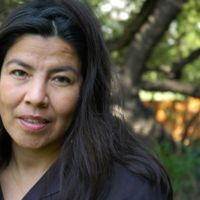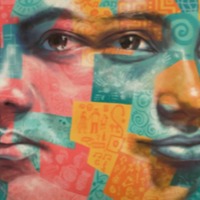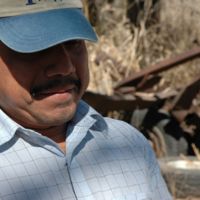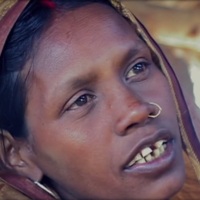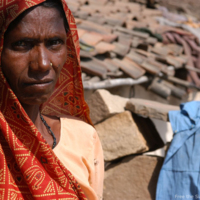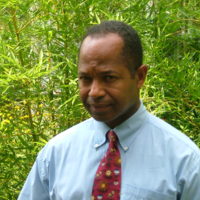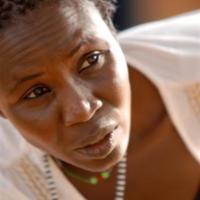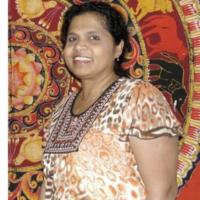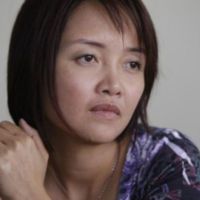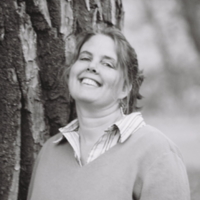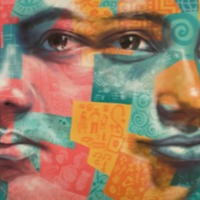
I was born in a remote village where neither birth nor death records are kept. In fact, if you were to ask me how old I am, I couldn’t tell you honestly. Not only are we very economically disadvantaged, we are 100% below the poverty line, so completely cut off from the world. We exist in a male-dominated society where women have no rights, absolutely no rights. We are not even allowed to laugh out loud because it’s considered disrespectful. We are forced into an arranged marriage. We become housewives, where at the end of the day there is abuse. There is torture.
At the beginning, this was very normal to me. That is what I knew. But when I was around six or seven, I started to notice things. I witnessed one of my aunts being murdered by her husband. Just a few months later, he married another girl. This aunt, she was close to my heart. She was loud. She would wear makeup and lipstick. She was a fearless woman. Because of this, her husband was stigmatized by society. This loud woman, who wore makeup and went outside was not good for him. He tried to warn her but she didn’t listen. So, one day he killed her. The whole village knew about her death but never reported it. I was very, very young. When I asked my mother about it, she would say, ‘Let’s not talk about it.’
Then I witnessed one of the most heartbreaking things, my own older sister being forced into marriage. It was not right. I was about 8 when my sister was arranged, so she was around 12. I would go out in nature and talk to the tree or the sky or the field. I would ask, ‘What is happening to me? What is happening to my sister?’ I would cry and talk to the universe. I knew that I would be next. I didn’t know what to do. There’s no way you can find help in that village as the police, the whole system, is corrupt. They don’t listen to women. Even if women try, there is no help. I was stuck in the village.
I started to write letters back and forth to my cousin, who moved to the city of Kathmandu from my village. Slowly, I got to know what he was doing. After almost six months, at around age 9 or 10, I had built a communication with him to help get me out of the village. With his support, I moved to the city of Kathmandu.
I can guess that I first became a child laborer between the ages of 9 and 10 years old. I worked for well-known clothing corporations that used loosely regulated foreign manufacturing. In order to keep up with the corporation’s demands for low cost and fast production, these factories created illegal sweatshops in inner cities using undocumented workers like me.
Six of us lived, worked, and slept in a 10×10’ room without a bathroom or clean water. We were forced to work seven days a week for 10 to 12 hours a day, getting paid less than $2 a day. My only bed was the large pile of clothes I produced each day. At night, I fell asleep on these clothes and dreamt of where they would end up and who would wear them. If you are reading this and do not know who made your clothes, you may be wearing the clothes I sewed as a child.
The work lasted for two years, then our agent disappeared. He took our last month’s salary. I became homeless. I was around 12. My cousin wanted me to go back to my village as I was maturing into a woman’s body. I didn’t want to go back. I planned to stay in the city but my cousin was worried because many women at my age end up in sex trafficking. I felt completely alone. I didn’t know what to do. I talked to God, to the universe. ‘Why is this happening to me? Why can’t I have shoes? Why can’t I have a book to go to school?’
At this lowest point, I received help from a stranger and decided to take control of my life. I began to study and found a small room to live in. This began a ten-year period where I studied English, computers and the internet, along with mathematics, philosophy, religion and the arts. There is a distance education system in Nepal where they allow you to study at home and be eligible for exams. I studied, took exams and at the same time, made handcrafts to support myself.
During this time, I came to understand the value of a quality education. I learned exactly what I needed, which led me to who I am today. Slowly, I also came to understand that our work system is not set up for human happiness. There is so much inequality, especially, with women and children. There are a lot of things in our system that are not fair.
There were a lot of problems in Kathmandu. I started to think ‘What can I do?’ I had no material but I had the skills that I had learned in the sweatshop. I needed a microfinance loan. At first, nobody wanted to give me a loan because I am a girl. Finally, I got a $1,000 loan and bought my sewing machine. My cousin and I started to work for ourselves, Through this experience, Local Women’s Handicrafts was born in 2008 when I was around 15 years old.
Local Women Handicrafts strives to empower women and girls in under-served and disadvantaged communities living with trauma and poverty. We provide a safe space, a supportive community, sustainable skills training, education, and resources to create opportunities that empower women and girls so they may build sustainable futures and a life without poverty. Today, we work with more than 100 women in our two schools — one in Kathmandu and one on the border of India and Nepal.
My advice is step out, seek wonder, don’t limit yourself, give unlimited choices to your life, have that courage. As soon as you allow it, you can do it. There is all sorts of energy that you are able to manifest. Of course, these processes are challenging. It can be a life or death struggle but if you believe really deeply in it, use all your power. I promise you will succeed. If I got out of my severe pain and suffering, anyone can do it. It’s all about knowing your power and not giving up your worthiness.
When I started travelling the world — the first time I spoke for Sam [Dr. Sam Collins, Aspire Founder] at a conference in Chicago — when I saw 200, 300 women coming together and sharing their power, their leadership and their skills, I was so surprised. I felt validated. Back in Nepal, I was fighting for ten years for women’s rights and I needed to keep fighting and fighting. When I came to America and I saw all these women, I felt a very powerful validation. There’s still a long way to go but compared to other countries like Pakistan and India, American and European women have so much power. They are so lucky. I just want to say to them: ‘The world’s women are looking up to them.’ They have so much responsibility to those women, to give them hope, so they can be role models.
I found so many mentors on my travels, so much support. It gave me so much energy and power to give more. I want these empowered women to be aware that they are very lucky and very blessed. We have a lot of work to do, all together, for the world’s women. That’s why I started a nonprofit in America – L.O.C.W.O.M, Local Organization Comprised of Women Offering Mentorship, https://locwom.org/, so we can help more women.
Right now, I’m building a policy that is focused on five things: Making sure that every child born on this planet has access to healthy food, quality education, free energy, housing and access to health care. As a child I had none of these things and I was in severe pain. I still have the trauma of being in a sweatshop. I still have terrible dreams. I have to live this life with this trauma. I turned that trauma into a passion to help more people but millions of people are not able to find that light within themselves. I’m trying to bring these policies to the world. My goal is to take these policies to the United Nations, to ask them to make it into a universal law. That is my goal, my biggest dream. I’m working towards that.
Narrative credit to Aspire For Equality
